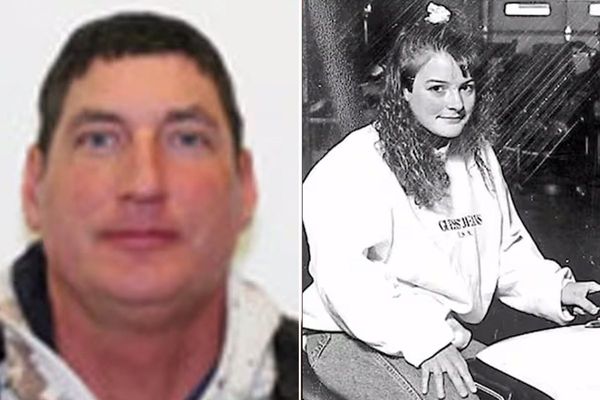
Ken and Julia Yonetani’s work exposes hidden connections of capitalism and overconsumption to environmental collapse, plays with eroticism and anxiety, and references the Greek gods of love and death, Eros and Thanatos.
But their series of works, Dysbiotica, began when they spat into a vial.
Peering through the lens of an electron microscope to look at the fluid, the partners in art and life descended into the world of their own microbes.
“There is so much inside us, literally, in terms of microorganisms, that our own DNA is only a fraction of the DNA within us,” Julia Yonetani says.
This is not a throwaway line – the Yonetanis’ work is deeply informed by science.
As she walks through the highlights of their 14 years of work on display at the Queensland University of Technology’s art museum, Julia Yonetani rattles off the individual scientists whose research and ideas informed much of their art.
There’s microbiologist Caroline Hauxwell’s take on the connections between soil and human health, coral reef ecologist Katharina Fabricius’s research into the impacts of the sugar cane industry and climate change on coral reefs, and molecular biologist Richard Jefferson’s hologenome theory of evolution.
Dysbiotica was born from a 2019 residency with QUT researchers, but Yonetani worries it was a little too one-sided to call a collaboration.
“We were just picking the brains of the scientists,” she says.
The militant atheist Richard Dawkins, it appears, was not consulted. The Yonetanis’ work draws too from the spiritual.
Take Sweet Barrier Reef (2009), a work given its own room. Suggestive bone white coral heads, bathed in dappled and wavering blue light, sit on a bed of sand-like substance raked into the patterns of a zen garden. The substance is, in fact, sugar. So too the coral.

Ken Yonetani is a free diver and bleached coral haunts many of their collaborations.
The couples’ reef anxiety dates back to the 1990s, diving off the south-western Japanese islands of Okinawa.
“We went diving the summer before and where there had been amazing, branch coral now was this vivid blue and white,” Yonetani says. “It was dying.”
The coral was falling victim to rising temperatures, as well as the runoff from sugar cane farms blanketing the reefs in soil, pesticides and chemical fertilisers.
Other works are of solidified salt. Still Life: The Food Bowl (2011) emerged from a residency in Mildura. It is a table groaning under the weight of a feast made from the salt pumped out of rising groundwater to protect agriculture in the Murray-Darling basin from the creeping threat of salinity.
Agricultural practices must change, Yonetani says, but she respects farmers just as she does scientists. In fact, she is one. The couple run a small, organic farm just outside the city of Kyoto.
In place of petrochemicals they grow beans to fix nitrogen into the soil into which they hand plant rice and wheat.
And as they watched the land improve, the pair began to wonder about hidden life in soil and its connection to the unseen inside themselves.
So they turned to science to open a window into that invisible world. They spat into that vial. Peering down the electron microscope, they saw a shifting vision as they zoomed further and further in. First it looks like space, Yonetani says, like you are looking at the moon. Then a coral reef, seen from above. Finally, the microorganisms themselves are revealed.
This was the journey from which Dysbiotica was born. Human figures and a deer head, created from bits of what could be bleached coral but also conjure up a microbial world. Strange, unsettling perhaps, but also hopeful.
“Things adapt, especially microorganisms adapt, at a pace that I don’t think humans have appreciated,” Yonetani says.
Ken + Julia Yonetani: To Be Human is free and runs until 23 October at QUT Art Museum in Brisbane.







